Here is the Volume 5 of Volleyball from When you watch something, visit us first! Mr. Futoshi TERAMAWARI, General Manager of #PFUBlueCats Ishikawa Kahoku, told us about Position and Rotation in Volleyball this time. This is the combined version of Part 5-1 through 5-3 on our YouTube channel.
In Vol.4, we learned about Rally of Volleyball.
This time, we interviewed Mr. Futoshi TERAMAWARI, who was Head coach of Men’s Volleyball National team as well as Team Manager of Women’s Volleyball National Team, and is currently General Manager of PFU Blue Cats Ishikawa Kahoku, a member of DAIDO LIFE SV.LEAGUE WOMEN, about the Position and Rotation in Volleyball.
We hope you will find this information useful when watching games.
.png)
Part 5-1: Rotation and Positions
Name of each rotation
About the Volleyball rotation, it is usual to divide the court into six (6) areas. Divide the court. Into six areas.
And this area is called “Area 1”. And this is called “Area 2”. This is “3”. And “4”. “5”. “6”. Like this.

“S” stands for Setter. When we say “S1” start, that means that Setter starts from right in the back row.
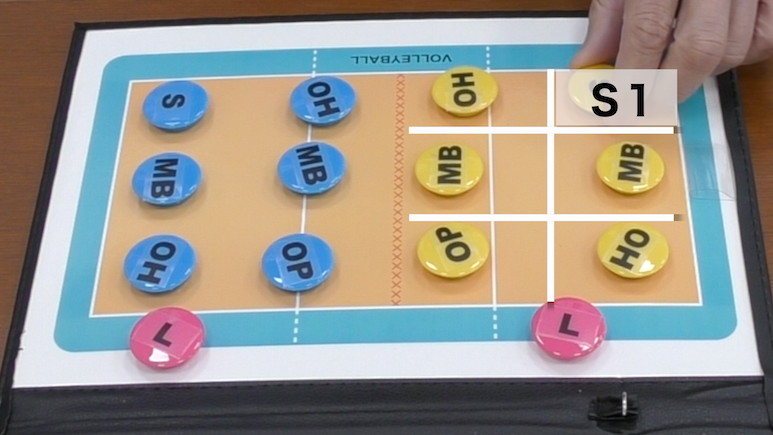
For example, talking about the blue team. This is “S5.” This is “S6” when Setter is here. Like this. If Setter is here, it is “S6”. This is “S3”.
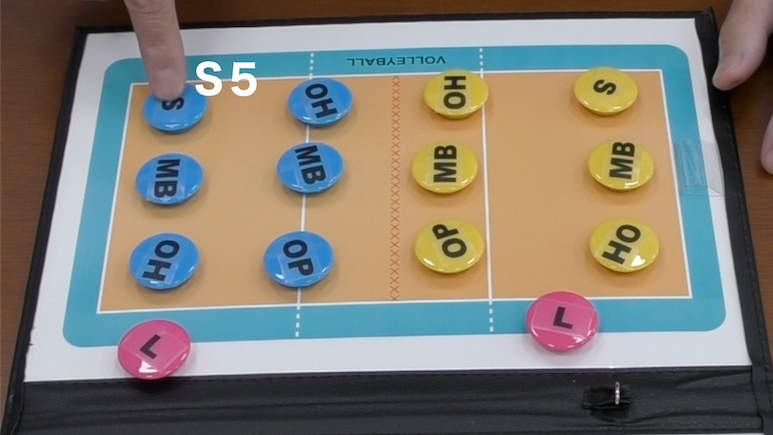
It is quite simple.
Q: Whether Setter is in a front row or in a back row affects the number of players who can attack, right?
I think that is the main reason why “S1” start is common. There are three (3), three attackers are in the front row. Another factor is that many of Setters are short in height. So his/her block is a little weak.
By starting the set at “S1” rotation, Setter will not go to the front row until the players rotate three times. Therefore, it is common to start the set from an advantageous starting position like “S1” in volleyball.

Q: So starting a set with S1, it can make to have a high attacking power and a high block can be continued for a while?
Yes, that’s right. But, there is another factor, matching. Blue starts from “S5”. But if the yellow team wants to have the same matching for the next set, the players will be off with one rotation if they serve first. Because of one rotation off, take back one rotation.
On the other hand, if yellow team wants to match this Middle Blocker (MB) to this blue MB, they can turn the rotation around and Setter can start from S4, for example.
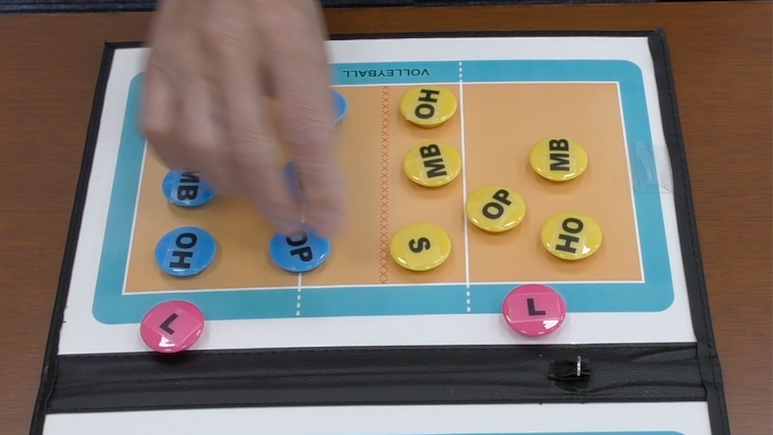
There are many teams in these days that prepare and enter games with the idea of starting S3 because of the good matching of this player and the opponent player as a strategy.
In current Volleyball, even if there are only two attackers in the front row, other two players from the back row may join the attack, so there are many teams, especially at the top level, that attack with four players in all rotations. So in that sense, if Setter’s block is not too weak, it is possible to start a set being Setter in the front row.
But one thing I can say is that the first five points of a set are very important in volleyball. The entering of a set is very important. So, in that means, it is true that many coaches prefer to start the set from their strong rotation. If they start from a weak rotation, they may be attacked easily.
For example, if the data shows that they can acquire the most break points in this rotation, the coaches may prefer to start from S1 regardless of the opposing team’s rotation and take the break points as many as possible at the beginning of the set.

That is why there are many teams start from S1 rotation.
Part 5-2: Attacks by Middle Blocker (MB)
Q: What is the important point of the attacks by Middle Blockers (MB)?
Well, the attacks by MB have the high percentage of successful. If the Reception is well and the setting up by Setter is also well, most of such MB’s attacks would be successful. So I think more than 60% will be successful. When the Reception is well.
Yes, I think so. The attacks by MB with the well Reception. That’s why the attack by MB is so cumbersome.
When the Reception is very well and there is the possibility of the Quick attack, the opponent players have to take care of that, so when the attack goes to sides, the block is delayed and that is a pattern of losing points. So the reason I say that Japan’s attack is better than before is because they are now able to get side-outs with the Quick attacks by Mr. (Taishi) ONODERA and Mr. (Akihiro) YAMAUCHI.
*Mr. Taishi ONODERA and Mr. Akihiro YAMAUCHI: Middle Blockers (MB) in Japan National Team, who were participated in Paris Olympic.

Q: I suppose the opportunities of attacking by MB has increased, right?
Well, the number of attacks by MB increased because the Quick attacks became more effective. It makes no sense on setting up for the Quick attacks if those are not successful. But now the MB’s attack can definitely get side-outs, the attacks from the side have come to be much effective.
Q: Then, it is a very critical point for Setter (S) whether S can use the attack by MB or not?
Yes. Very much.
Q: Is the aim of showing such attacks by MB early in the game to increase the effectiveness of the attacks from side later on?
In fact, I think if teams can score the points with the Quick attacks later in the games, such teams are quite strong.
Q: What is the reason why the probability to be stopped of such effective attacks by MB increase later in the game?
Well, the opponents foreign teams have good MBs, after all. I guess they will be getting used to the speed of Japanese Quick attacks. Their timing of block becomes more in tune.
Q: Does that mean it becomes easier for the opponent to guess the attacks by MB?
Well, the blockers of foreign teams do not “guess” the Japanese attacks, actually. As they are using the scheme of Read block. Their block goes where the setting up of Japan. So. But I think Japan’s Quick attacks are better than before. Much better. Even when they are competing each other in the game, there are more opportunities where I think, “Oh, they can use the Quick attack in such situation.”
So, regarding the MB’s attacks, the attacks by the opponent’s MB cannot be stopped, but when our MB can be successful in attacking, it becomes easier for Setter (S) to setting up the attacking.
Q: It is important whether S can use the attacks by MB because that adds another option of attack, right?
I think the attacks by MB are very important. Among the any kind of attacks.
Q: With the effective attacks by MB, the opponent’s MB is forced to be more aware of such attacks, which slows down their response to attacks from the side?
Yes. That’s right. So the attacks by MB must be faster and higher.Therefore, the taller MB has the advantage.
Q: There was the impression that tall Japanese peoples used to be slow in their movements, wasn’t there?
Compared to MBs of French or Italian team, Japanese MBs are not as fast. They have also less power. But that cannot be helped, because that is a Japanese attribute. But attacks by MB are getting better than in the past. Much better than those were.
I think that the strength of Japan’s team has improved. Even now, compared to the top teams in the world, Japan’s blocks are still weak, but even so, the number of Kill blocks by Japan team has increased, compared to before.
*Kill block: Blocks which result in immediate points or side outs.
So I think the attack of Japan team has been improved than before.
Q: Is the reason why MB is replaced by Libero when MB goes in the back row because it is so a tough position?
No. Well, MB is a tough position. It is tough. But this MB can stay on the court even in the back row, and this Outside Hitter can be changed with Libero (L).
There is a Cuban MB player who stays on the court when in the back row because he hits back attacks. He does not do the Reception, but he hits back attacks, that is why he stays on the court. So there is no restriction that the MBs must be changed with L when he/she goes in the back row.
Of course, MB is a position that requires a lot of hard work in the front row.
But such hard work is not the only reason of changing of MB and L, it is also true that there are not many MBs with good Reception of Serve. That is for sure. There have been a number of MBs who did Reception. In fact, there still are teams that MB do Receptions.
Part 5-3: Outside Hitters (OH) and Opposite (OP)
Q: We have the impression that the Opposite Players (OP) do not do the Receptions?
Of course OP players can do that. If he/she is able to do Reception. In the contrary, there is no rule that OP players always have to do Reception. If there is a OP player who is good at Reception, of course he/she is to do Reception. I think there may be more and more OP players who will be able to do Receptions in the future.
In short, OP players do not have to be a “Super Ace” as they used to be called. Most cases are in that way, though. One thing I can say is that OP players do not have to be so a Super Ace. This OP player’s role is free now.
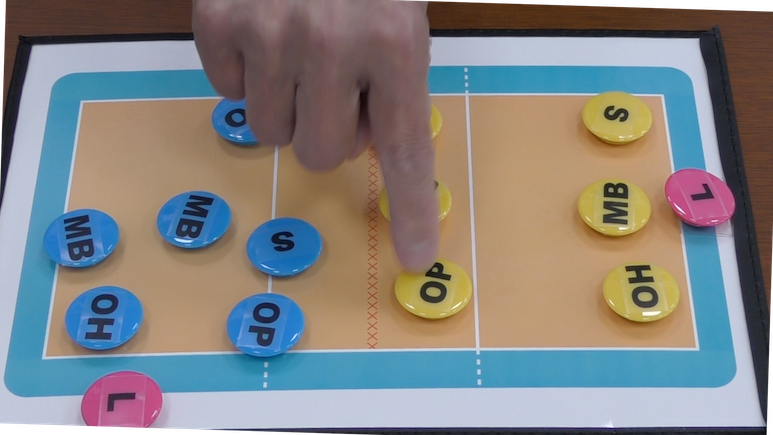
So, in some cases, this OP player can join Reception and this Outside Hitter (OH) does not have to do that.
Q: So it depends on the skill of the OP’s Reception?
I suppose if OP is good at Reception, he/she is to do that. And since OP is the point earner of the team, even if the Reception is bad, the setting up will go to the OP’s position, so there is a merit to be able to attack in no hurry. Basically OP just attacks, and he/she does not do Receptions. He/she also do digs, though.
Well, though there are many cases in which OP does not do Receptions, there is no need to consider on stereotypes. For example, the Middle Blocker (MB) is currently being assigned to be in the middle of the court, but it does not have to be. It is also OK to have MB here, if this OH player is good at blocking. So there can be many variations.
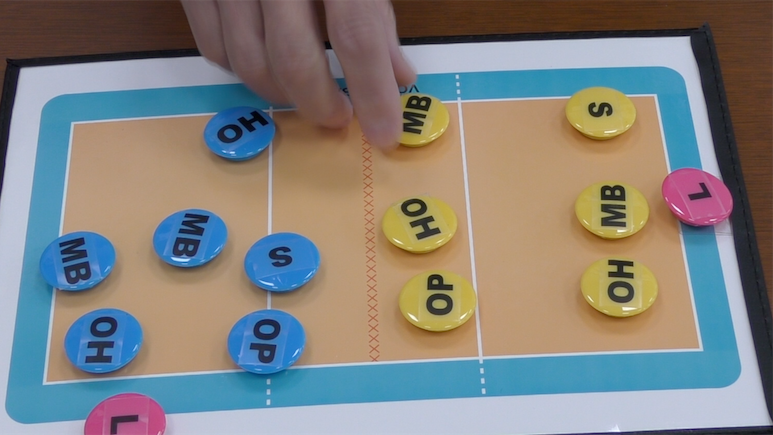
But when Volleyball has been played for a long time, it is often the case that it is better to play each position separately like these days, I guess. Considering why Setter (S) is here, and I think coaches tried other positions. I have tried it, too, but I think this position has the best probability.
So the positions of each players may be depending on the players of the team. If there are a lot of left-handed attackers, then S position can be here. Just doing the reverse pattern, though I acknowledge that this is the extreme case.
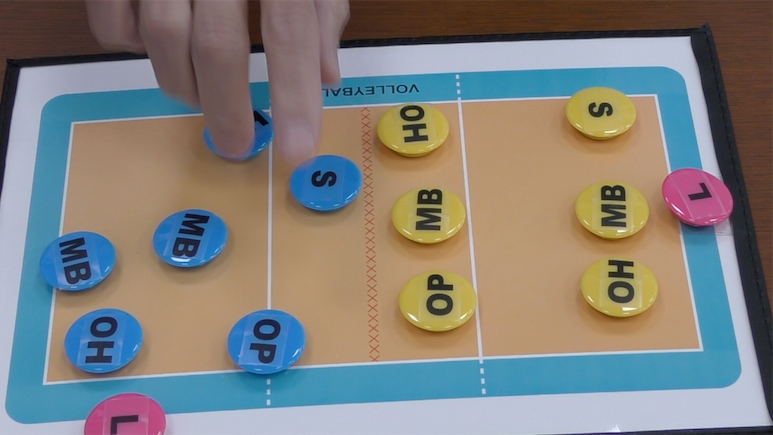
But I think that would be interesting. I would like to see such approach. So I think there is no need to have a stereotypical form, but I think the current form is suitable for Japanese.
So I think the form can change. There are many, new different ways to play Volleyball. It can be said that the players change the Volleyball. The members can decide the form of the form.
If all players are good at Reception, but there is no “cannon” (= strong attacker), all players including OP do Reception and can try to attack with many choice.
Share this content:
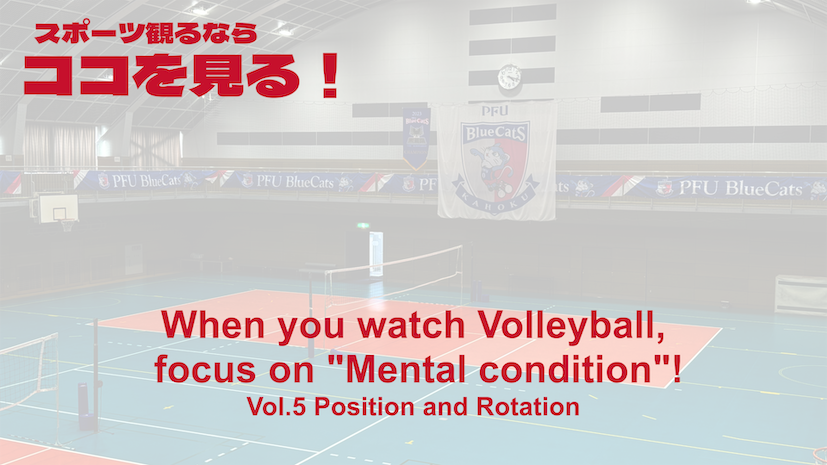
コメントを残す